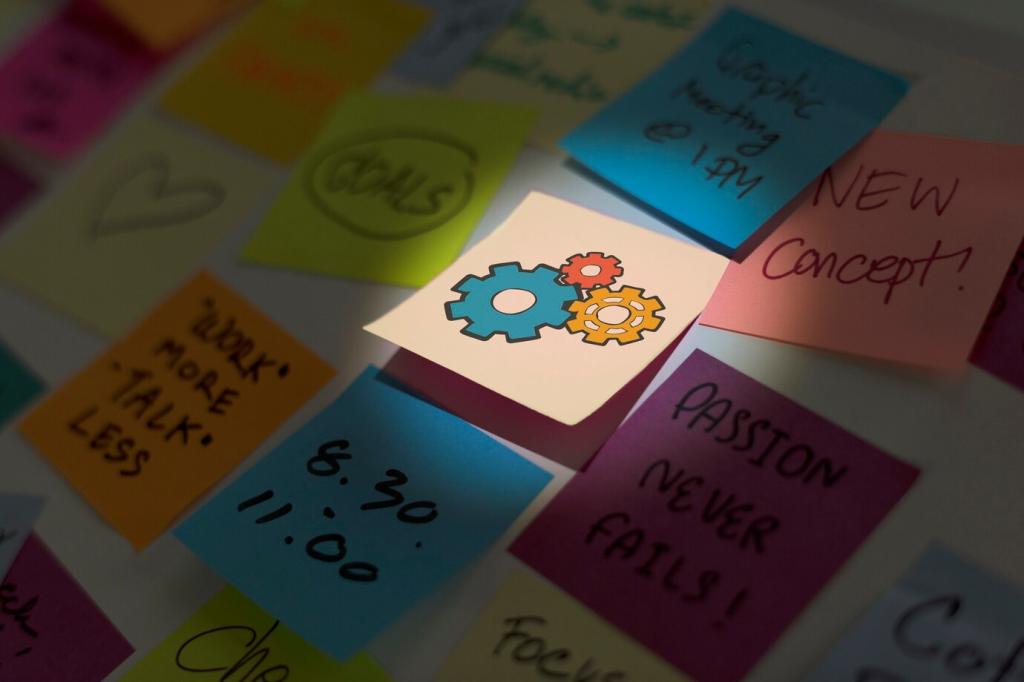
Designing Efficient Workspaces with Sustainable Materials
Theme selected: Sustainable Materials: Eco-Friendly Designs for Efficient Workspaces. Step into a workspace where every surface, texture, and fixture pulls double duty—elevating performance while respecting the planet. Explore practical choices, real stories, and science-backed ideas that make offices healthier, smarter, and easier to love. Curious about future posts on this theme? Subscribe and share what you want us to explore next.
Frames and legs made from recycled aluminum and steel resist dings, support heavy loads, and look quietly refined. Recycled aluminum can use up to 95% less energy to produce than virgin aluminum, shrinking embodied carbon without sacrificing strength. Ask suppliers for post-consumer content documentation and end-of-life recyclability details.
Start with the Right Materials
Circular Furniture and Modular Thinking
High-quality chairs are engineered for decades, not years. Remanufactured models replace worn casters, foam, and fabric, saving resources while preserving ergonomics. Request component-level warranties and service history. Many teams report improved comfort and fewer repairs after switching to reputable refurbishers who standardize parts across mixed chair inventories.

Circular Furniture and Modular Thinking
Bench systems with interchangeable legs, rails, and privacy screens pivot from focus to collaboration without a dumpster in sight. Swappable parts reduce downtime and procurement headaches. Label components and store spare connectors so facilities teams can reconfigure quickly, then document layouts for future moves or expansions.

Bio-Based and Biophilic Surfaces
Fast-growing bamboo offers a strong, stable surface with distinctive grain. Formaldehyde-free laminations and UV-cured finishes keep emissions low. Be mindful of sources and adhesives used in laminating strips. Edge treatments with rounded profiles soften contact points and reduce chipping where sleeves, laptops, and notebooks meet the desktop.
Materials That Boost Efficiency
High light reflectance value (LRV) paints and pale laminates bounce natural light deeper into the floorplate, often reducing artificial lighting needs. Combine with matte textures to minimize glare. Position glossy finishes away from screens and use warm, neutral palettes that maintain brightness without feeling clinical.
Materials That Boost Efficiency
Recycled-fiber insulation in partitions and ceiling clouds buffers temperature swings and drafts. Denser, bio-based boards can add thermal mass near sun-washed zones. Comfortable, consistent temperatures reduce distractions. Coordinate material choices with HVAC tuning to lock in gains and document the before-and-after comfort feedback from occupants.
A Studio Story: Greener by Design
A 28-person design studio mapped every surface and found redundancy: three desk systems, five chair models, and shelves off-gassing more than expected. The team listed hotspots, then prioritized swaps with the biggest impact on air quality and reconfigurability, promising visible wins within one quarter.

Health First: Certifications and Safety
Lean on third-party labels for clarity. FSC supports responsible wood sourcing, Cradle to Cradle evaluates material health and circularity, and GREENGUARD Gold signals low emissions. Use labels as a screening tool, then request full disclosures and test reports to confirm performance in your specific application.


Health First: Certifications and Safety
Select water-based, low-VOC adhesives and sealants with transparent safety data sheets. Pre-finished components can minimize on-site emissions and schedule delays. Plan ventilation and off-gassing periods before occupancy. Share the timeline with staff so everyone understands when spaces are safest and why patience improves indoor air.
Finishes that Age Gracefully
Choose powder-coated metals, hardwax oil on wood, and replaceable edge banding to resist scuffs and allow touch-ups. When wear appears, embrace patina strategically—define thresholds for refinish versus replacement. Keep a small stock of the exact finish codes to match field repairs without color drift or sheen mismatch.
Repair Kits and Spare Parts
Create labeled kits with extra glides, casters, cable grommets, and fasteners. Photograph assembly steps and store digital manuals in a shared folder. Fast fixes prevent landfill moments. A simple policy—repair first, replace second—builds a culture of stewardship that employees are proud to champion and model.
Cleaning that Respects Materials
Use manufacturer-recommended, plant-based cleaners and soft cloths to avoid stripping protective layers. Train cleaning crews on specialty surfaces like cork and bamboo to prevent swelling or staining. Post short care notes discretely under desks or inside cabinets so instructions are always at hand when messes happen.

Your Action Plan
Set Priorities and a Material Palette
Define goals around air quality, acoustics, and adaptability. Build a palette with two or three core materials and verified finishes. Pilot in one room, measure feedback, then scale. Assign owners for decisions and document lessons learned so you avoid repeating the same experiments during the next phase.
Source Locally and Transparently
Shorten supply chains by choosing nearby fabricators and distributors. Ask for recycled content, emission certifications, and disassembly instructions upfront. Request samples to test glare, feel, and durability. Maintain a shared spreadsheet of verified options, pricing ranges, and lead times so teams can make informed, timely choices.
Share Progress and Invite Feedback
Publish a simple materials log with photos and reasons behind each choice. Invite comments from employees about comfort and usability. Schedule quick polls after every change. Celebrate wins—like quieter rooms or better daylight—and be open about trade-offs, keeping trust high as you iterate toward a greener workspace.
